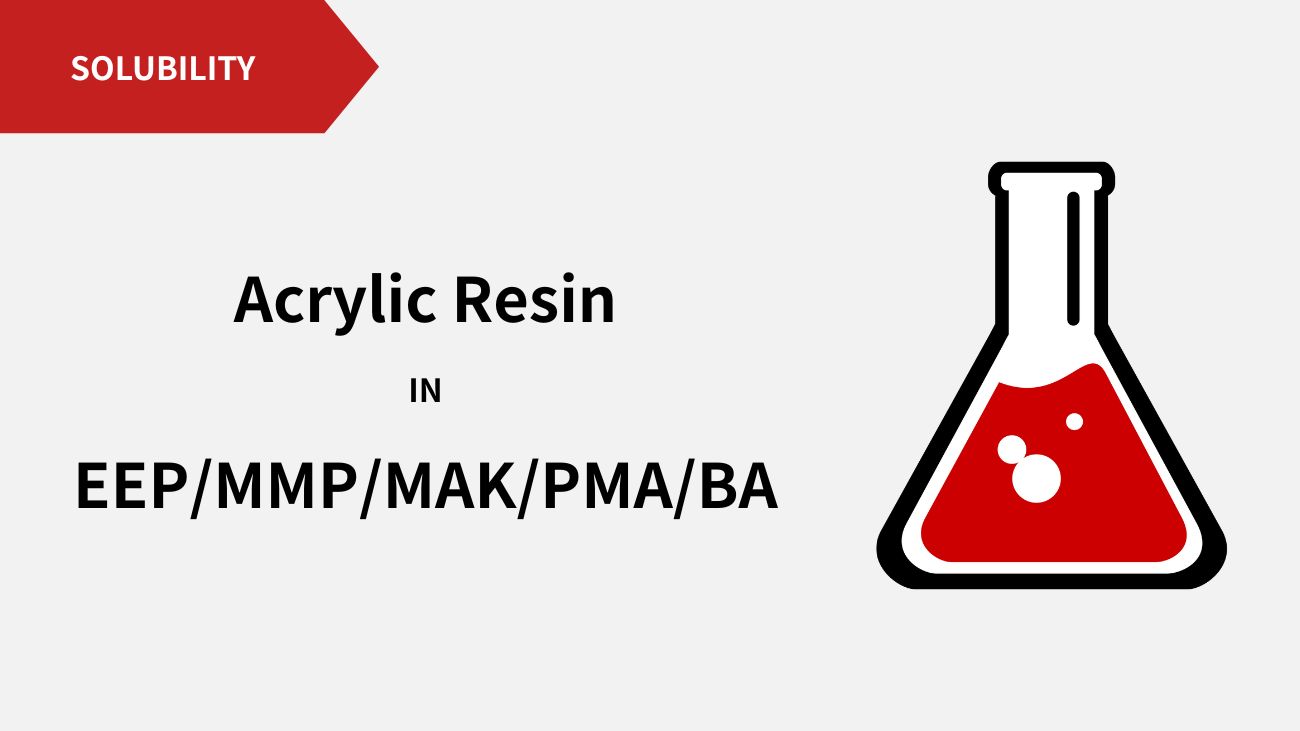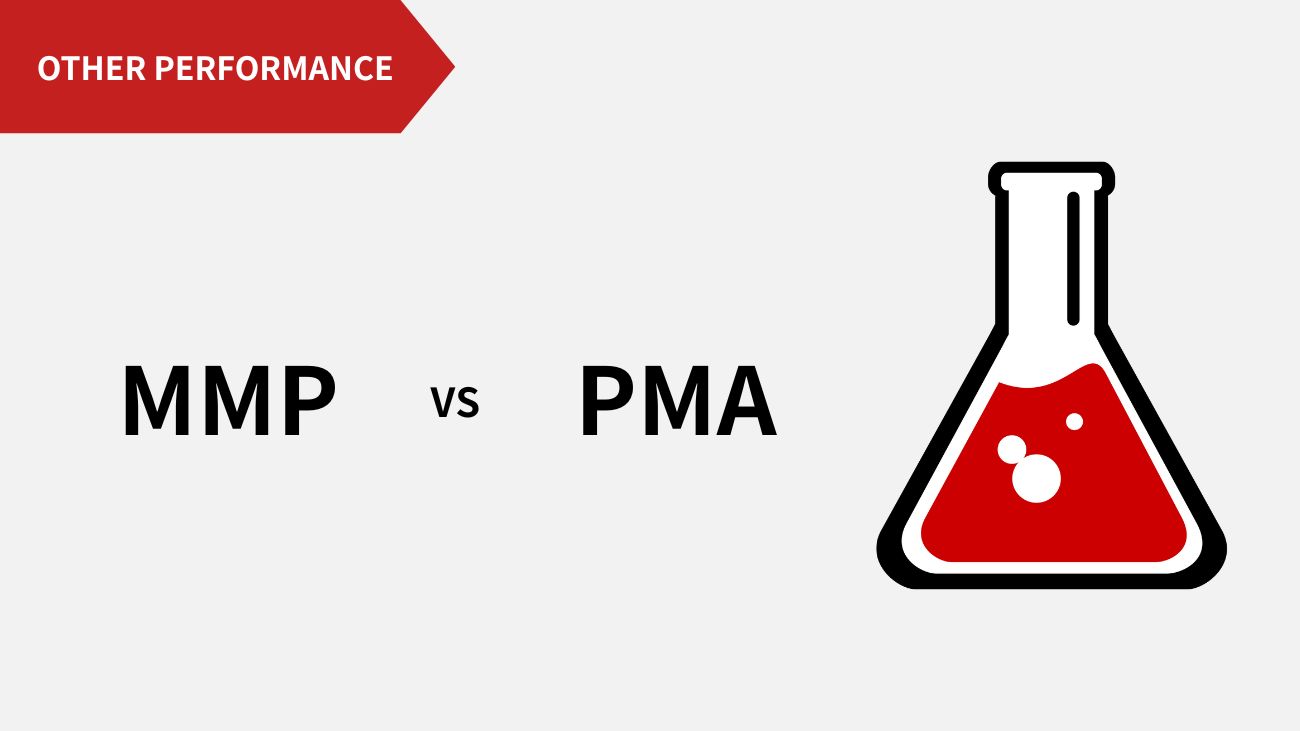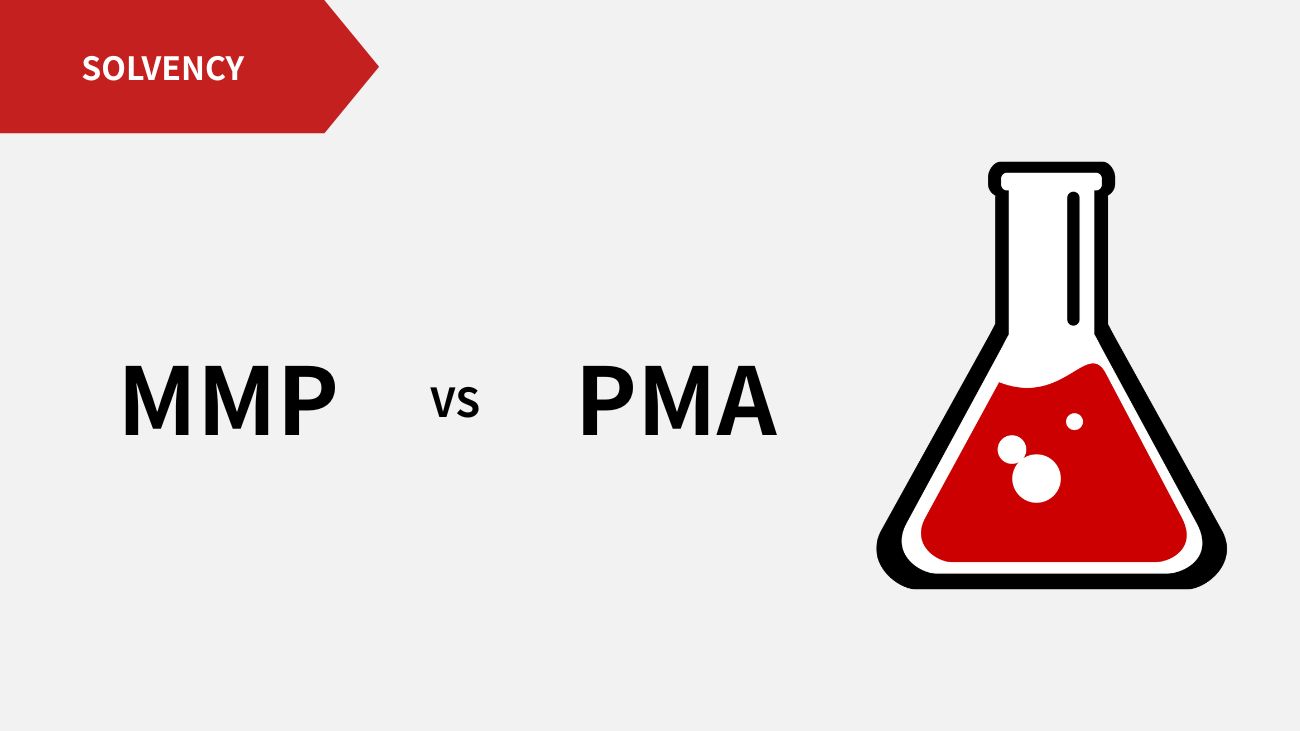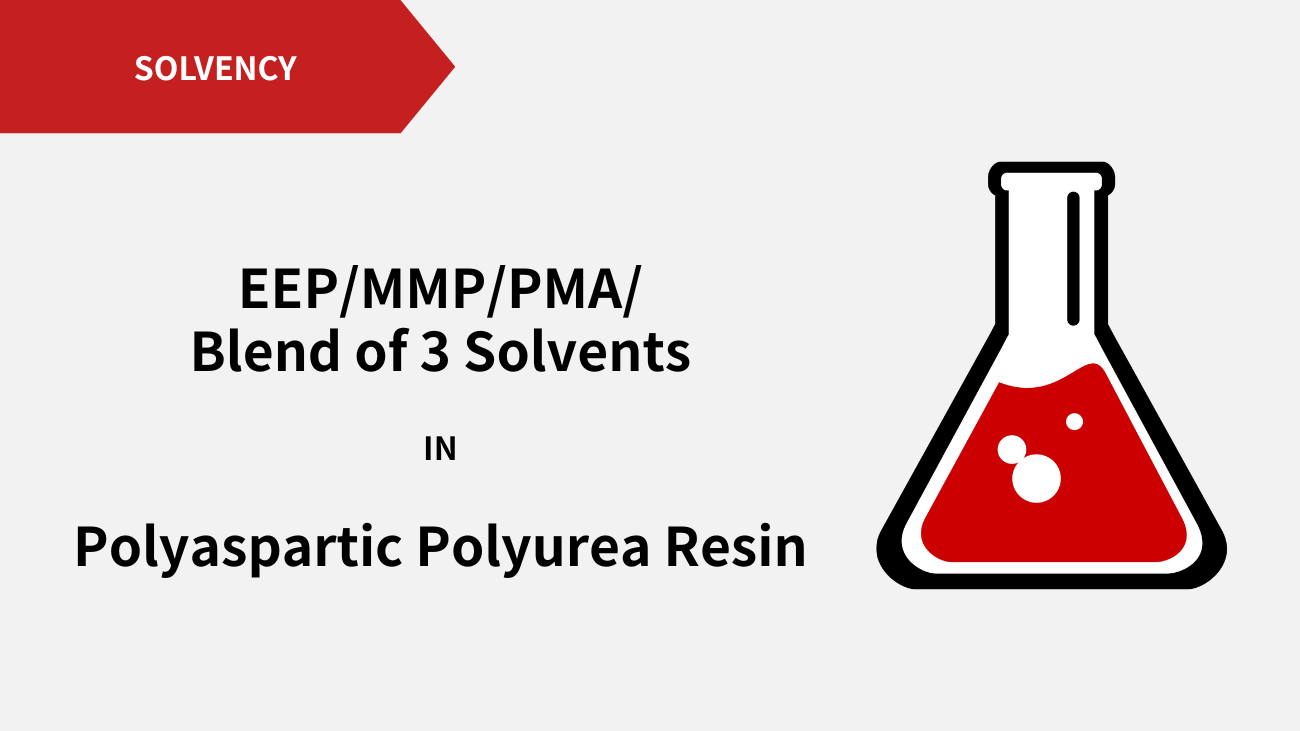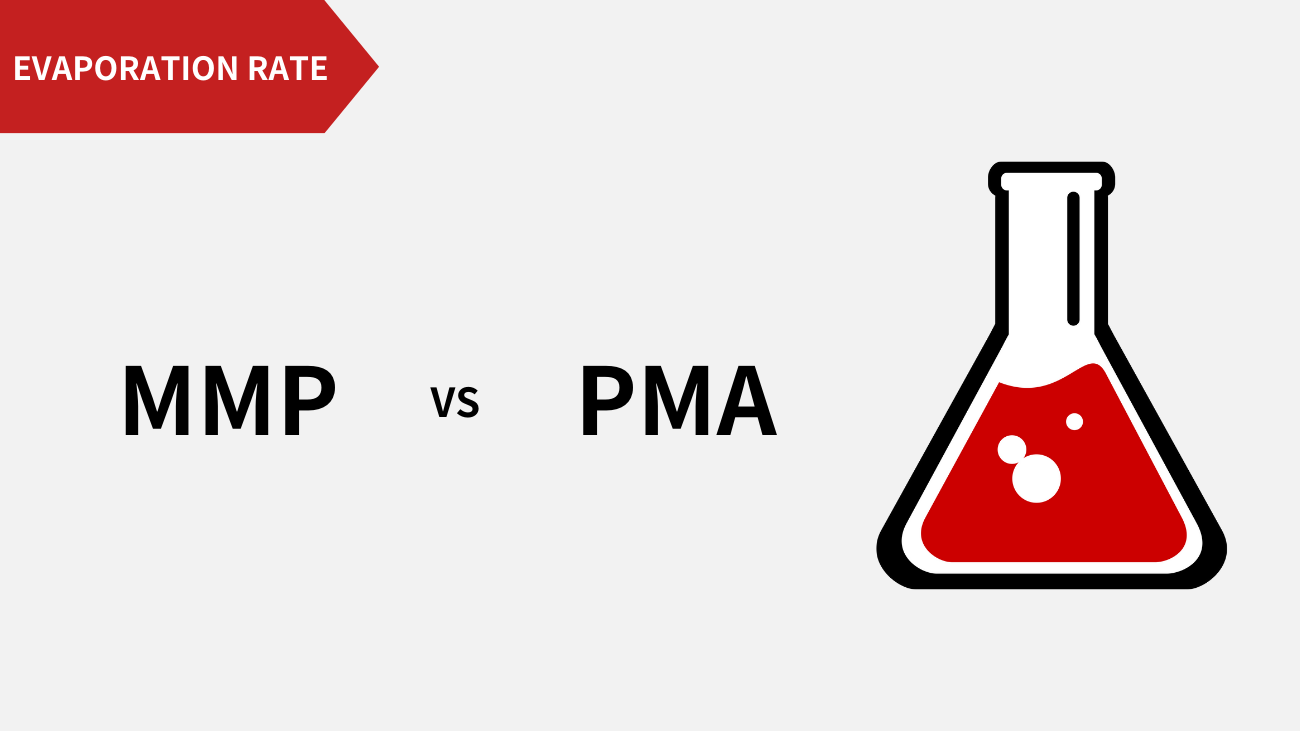Shenzhen Prechem New Materials Co, Ltd.

Environmentally Friendly MMP as a Replacement for PMA (Part 4): Coating Performance Comparison
Conception expérimentale
MMP and PMA were formulated into thinners and applied through spray coating. Technicians also used both solvents in practical coating formulations and all tested relevant performance data to compare their advantages and disadvantages in various applications.
Analyse des données
Prepare Thinner Samples
Four 500 ml sample bottles were prepared with four formulated thinners labeled Thinner Samples 01#, 02#, 03#, and 04#. Detailed compositions are shown in Table 1:
| Component | 01#(g) | 02#(g) | 03#(g) | 04#(g) |
| Ethyl Acetate | 30 | 30 | 30 | 30 |
| Isopropanol | 20 | 20 | 20 | 20 |
| Isopropanol | 110 | 110 | 110 | 110 |
| MMP | 0 | 15 | 25 | 40 |
| PMA | 40 | 25 | 15 | 0 |
| Total | 200 | 200 | 200 | 200 |
Table 1: Thinner Samples
Test 1: Performance Comparison of Thinners in PU Topcoat
Four in-house thinners and a commercial PU thinner were adjusted to a suitable application viscosity for spray coating. Panel performance was compared as shown in Table 2:
| 01# | 02# | 03# | 04# | Commercial | |
| PU Coating : Thinner | 5:1 | 5:1 | 5:1 | 5:1 | 5:1 |
| Viscosity (s, Ford Cup #4) | 14.01 | 14.02 | 14.01 | 14.01 | 14.02 |
| Surface Dry Time (min) | 113 | 112 | 112 | 111 | 110 |
| Hard Dry Time (h) | 24 | 24 | 23.5 | 23.5 | 23 |
| Leveling (0–10 scale) | 10 | 10 | 10 | 10 | 10 |
| Pencil Hardness | 2B | 2B | 2B | 2B | 2B |
| Gloss (60°) | 138 | 141 | 139 | 140 | 128 |
Table 2: Performance of Thinners in PU Topcoat
Conclusion: MMP-based PU thinners exhibit slightly faster surface evaporation (shorter dry time) and higher gloss than PMA-based thinners. Other performance are equivalent.
Test 2: Performance Comparison of Thinners in Nitrocellulose (NC) Topcoat
Data for NC topcoat applications are shown in Table 3:
| 01# | 02# | 03# | 04# | 外购 | |
| NC Coating : Thinner | 1:2 | 1:2 | 1:2 | 1:2 | 1:2 |
| Viscosity (s, Ford Cup #4) | 14.05 | 14.03 | 14.05 | 14.04 | 14.02 |
| Surface Dry Time (min) | 5 | 4 | 4 | 3 | 2 |
| Hard Dry Time (min) | 18 | 18 | 16 | 16 | 15 |
| Leveling (0–10 scale) | 10 | 10 | 10 | 10 | 10 |
| Pencil Hardness | 2H | 2H | 2H | 2H | 2H |
| Gloss (60°) | 146 | 165 | 157 | 168 | 126 |
Table 3: Performance of Thinners in NC Topcoat
Conclusion: MMP-based NC thinners show faster surface evaporation, stronger solvency (lower viscosity), and higher gloss than PMA-based thinners. Other performance are equivalent.
Test 3: Performance Comparison of Thinners in Acrylic Topcoat
Data for acrylic topcoat applications are shown in Table 4:
| 01# | 02# | 03# | 04# | 外购 | |
| Acrylic Coating : Thinner | 5:3 | 5:3 | 5:3 | 5:3 | 5:3 |
| Viscosity (s, Ford Cup #4) | 14.10 | 14.13 | 14.15 | 14.14 | 14.12 |
| Surface Dry Time (min) | 110 | 110 | 100 | 101 | 122 |
| Hard Dry Time (h) | 24 | 25 | 25 | 24 | 25 |
| Leveling (0–10 scale) | 10 | 10 | 10 | 10 | 10 |
| Pencil Hardness | 3B | 3B | 3B | 3B | 3B |
| Gloss (60°) | 130 | 135 | 136 | 141 | 129 |
Table 4: Performance of Thinners in Acrylic Topcoat
Conclusion: MMP-based acrylic thinners exhibit faster surface evaporation and higher gloss than PMA-based thinners. Other properties are equivalent.
Test 4: Performance Comparison of MMP vs. PMA in Appliance Enamel
| Ingredient | Weight (g) |
| Polyester Resin | 220.1 |
| Titanium Dioxide | 317.6 |
| Titanium Dioxide | 5.8 |
| Titanium Dioxide | 49.2 |
| Titanium Dioxide | 15.0 |
| Dispersed via high-speed disperser | |
| Polyester Resin | 154.2 |
| Crosslinker | 58.2 |
| Catalyst | 7.5 |
| PMA or MMP | 225 |
Table 5: Appliance Enamel Formulation
| Performance Parameter | PMA | MMP | |
| Viscosity (Ford Cup #4, s) | Initial | 38 | 38 |
| After 2 weeks at 50°C | 30 | 38 | |
| Storage Stability (50°C, 2 weeks; Score 0–10) | Liquid Separation | 6 | 6 |
| Sedimentation | 9 | 10 | |
| Ease of Redispersion | 8 | 8 | |
| Curing (MEK Double Rubs) | 540 | 600 | |
| Leveling (Score 0–10) | 10 | 10 | |
| Leveling (Score 0–10) | 75 | 78 | |
| Whiteness (4B-3G) | 78.2 | 78.8 | |
| Whiteness (4B-3G) | 100 | 100 | |
| Pencil Hardness | HB | HB | |
| Impact Resistance (Direct, N·cm) | 160+ | 160+ | |
| Water Resistance (5 weeks; Score 0–10) | Blistering | 10 | 10 |
| Color Change | 10 | 10 | |
| Gloss Change | 10 | 10 | |
| Hardness | 10 | 10 | |
| Xylene Resistance (72 h) | 鼓起 | 鼓起 | |
| Acid Resistance (10% HCl, 3 h; Score 0–10) Blistering | 3 | 3 | |
Table 6: Performance of MMP vs. PMA in Appliance Enamel
Conclusion: Performance of MMP and PMA in appliance enamel is comparable. MMP shows higher curing resistance and gloss.
Conclusions expérimentales
- Thinners formulated with MMP and PMA exhibit similar overall performance in PU, NC, and acrylic topcoats. However, MMP-based thinners show faster surface evaporation and higher gloss than PMA-based thinners.
- MMP and PMA demonstrate comparable performance in appliance enamel, with MMP offering higher curing resistance and gloss.
Summary of MMP vs. PMA Application Testing Series:
Through comparative testing, the following conclusions are drawn:
- MMP and PMA exhibit similar evaporation rates (as pure solvents or in blends).
- MMP has stronger solvency than PMA for nitrocellulose, alkyd resins, and acrylic resins.
- MMP has significantly higher water solubility than PMA.
- MMP shows far superior tolerance to non-polar solvents versus PMA.
- The thermal stability of PMA and MMP is equivalent under identical conditions.
- Both solvents inhibit hydrolysis when water-saturated. Under unsaturated conditions (4% water), MMP exhibits minor acid value changes and better stability.
- MMP-based thinners show faster surface evaporation and higher gloss in PU, NC, and acrylic topcoats versus PMA.
- MMP offers higher curing resistance and gloss in appliance enamel.
Overall Conclusion: MMP matches or exceeds PMA in all solvent performance and practical coating applications. With higher solvency and tolerance, MMP reduces the need for active solvents and allows greater use of low-cost diluents, lowering total solvent costs. As an eco-friendly solvent, MMP is a viable substitute for PMA in coatings.
Contexte
Solvents are widely used in coatings and inks to dissolve components (e.g., active agents, polymer resins, pigments) for ease of transport and application. However, solvents evaporate during film formation, releasing volatile organic compounds (VOCs) into the atmosphere. Global environmental regulations are increasingly tightening restrictions on solvent emissions, thereby driving the demand for high-solvency, low-toxicity alternatives to minimize solvent usage and reduce VOC emissions.
Oxygenated solvents like glycol ethers and glycol ether esters combine ether/alcohol or ether/ester properties for broader applicability. PMA, an exemplary ether-ester solvent, is widely used in coatings. Recent advancements have introduced MMP as a superior alternative to PMA. This study compares MMP and PMA in coating applications.
Pour plus d'informations sur les solvants fonctionnels, veuillez consulter le site : PREC MMP Solvant.

